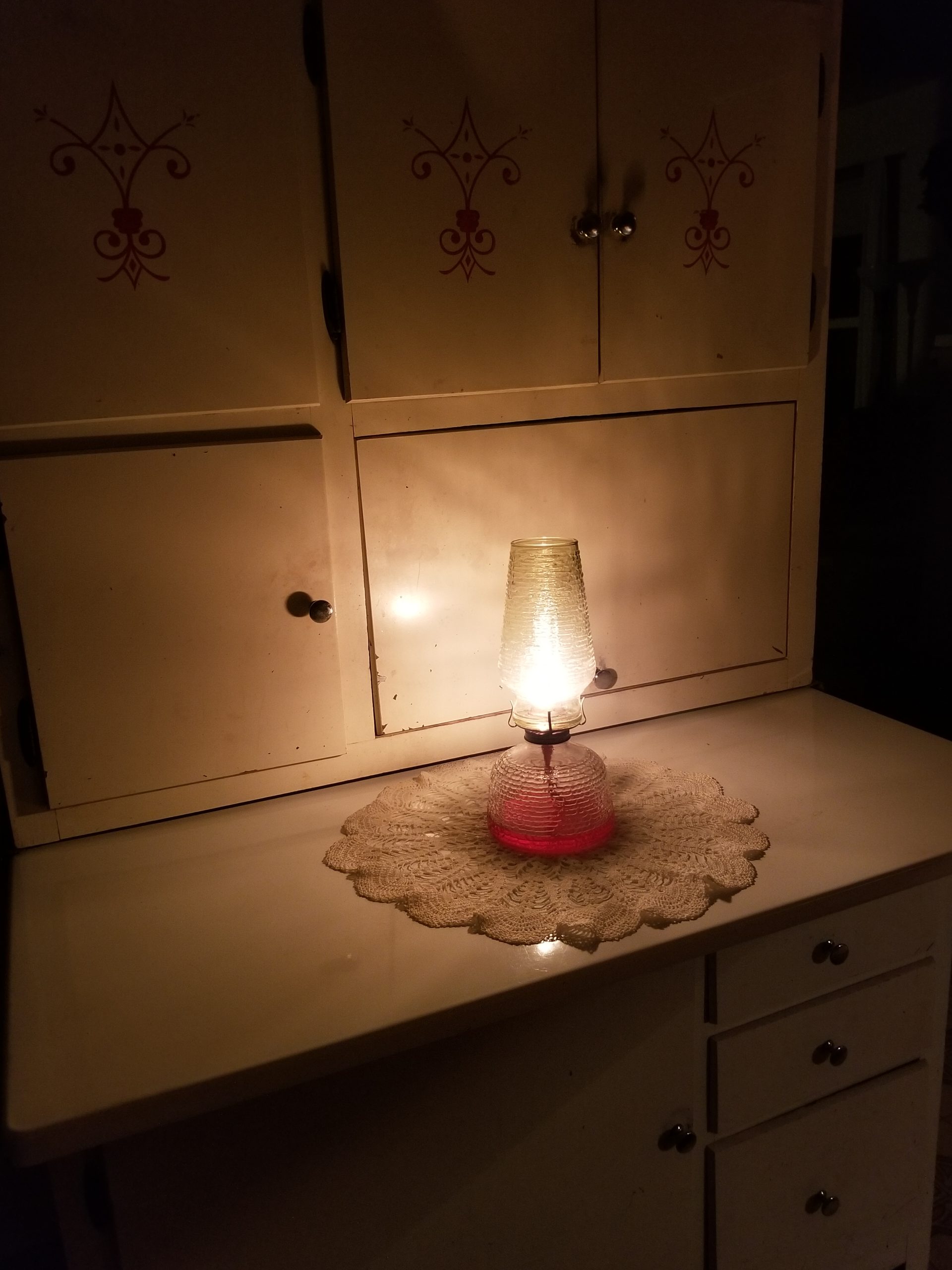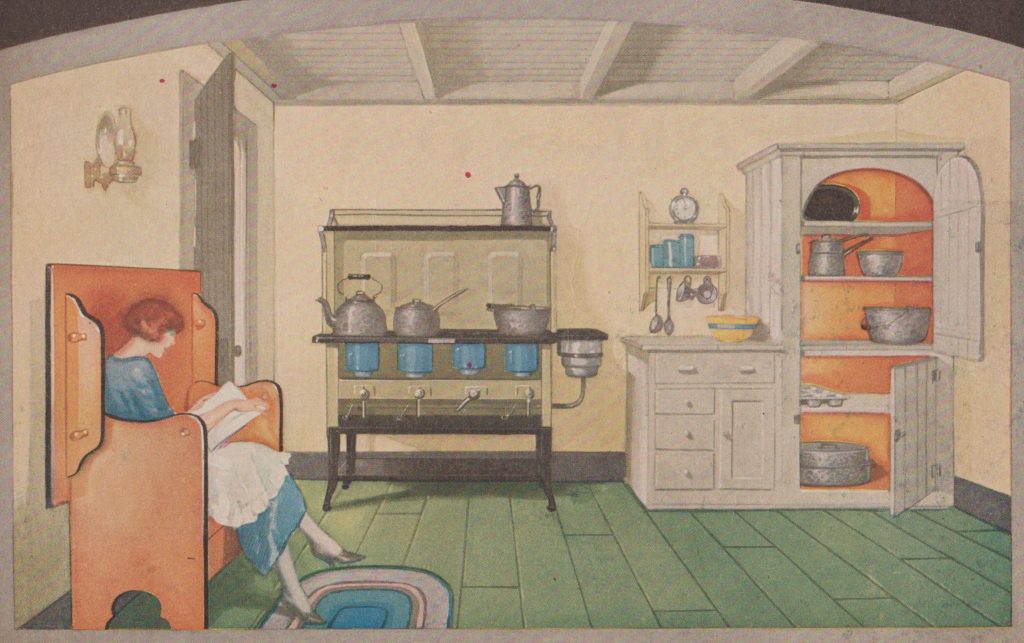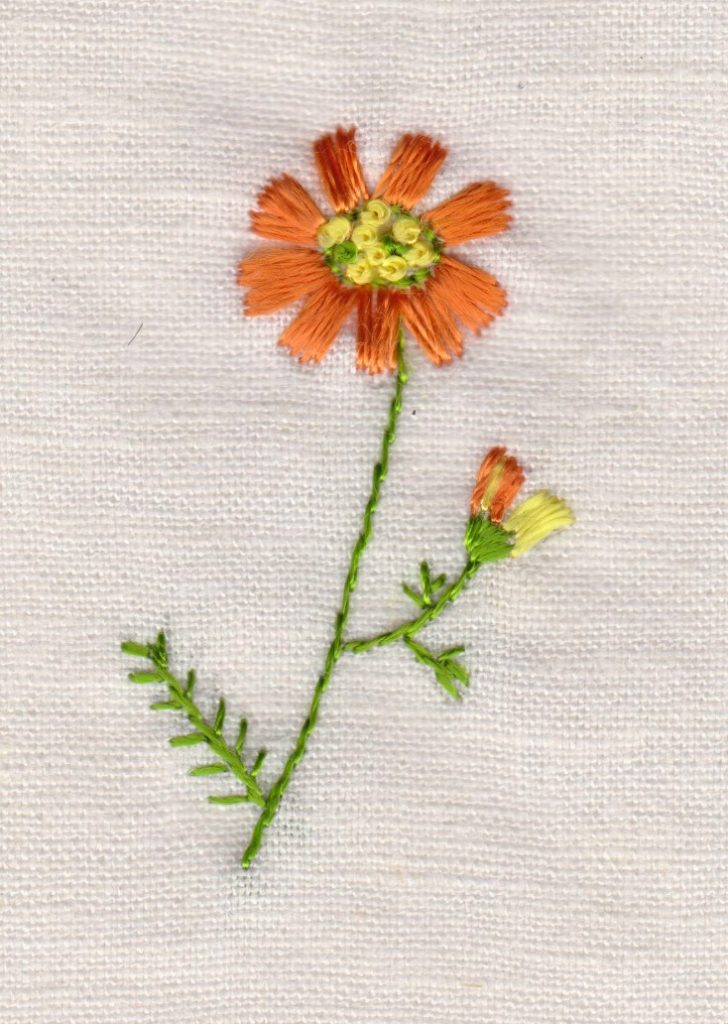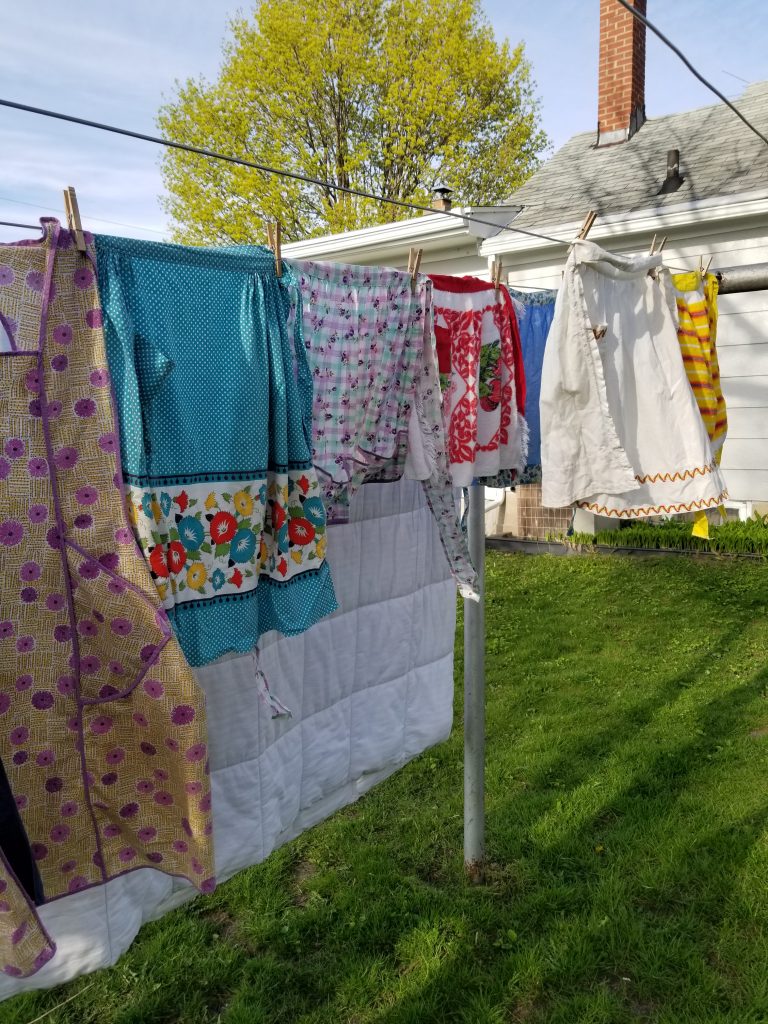
Have you noticed that modern homemaking is always associated with a vintage aesthetic?
A quick search of Instagram homemakers will show you that people equate all things homemake-y with a vintage lifestyle. It seems as if it’s done primarily by housewives themselves. A short perusal and in no time, you’re knee deep in aprons, braids of onions, and kerosene lamps arranged on embroidered dresser scarves. It’s as if the two are a package deal. It’s interesting that it’s one of the few careers that models itself after the past. I got to wondering recently, why do these two paths often go together? Here are my conclusions.

The golden age of homemaking
What is the iconic period for housewives and homemakers? The early to middle 1900s. Housewives were seen as filling necessary roles in society and valued for their work in the home. Not only was it an acceptable career, it was generally expected that a wife would work at home full time. As such, there were copious amounts of materials to help housewives, besides the camaraderie with fellow housewives all over the neighborhood. There were clubs and organizations that encouraged wives to see their roles as essential, with classes on efficiency and methods …. Girls, those were our glory days! For those of us born decades after this era, we can only study the works that they left behind. (Which, if you haven’t noticed, is a huge part of what this blog is about–rediscovering and incorporating the wisdom of past homemakers.)
Modern times don’t especially value the contributions of homemakers, so there is no longer that level of support. Many high schools no longer offer home economics classes. When was the last college graduate you ran into who majored in home economics? I never have but it used to be a real thing. Of course, there’s the HGTV/Martha Stewart homemaking, but it’s a spectator kind of homemaking. I’ve only attempted a few “Martha caliber” projects in my life; it’s certainly not my source of daily inspiration.

One income families
The choice to be a homemaker means that you’re likely a one-income or a family with a smaller income. It’s not always the case, but it usually goes hand in hand, since one half of the team is at home. Money tends to trickle more often than it flows. Our modern society is generally affluent but we don’t have to look too far backwards to days when this country wasn’t.
Vintage books and magazines are dedicated to advice on saving money and stretching every penny, especially ones written during wartime and economic depressions. They’re still easily found and while they might have some advice that doesn’t relate to us anymore (like suggesting that housewives make and sell lace collars to earn a little side income), the principles are still there.
The advice is refreshing–nothing about apps, technology, etc. Just simple living.
Home is your work site
If you’re a homemaker, have children, tend a yard or garden, and clean your house, you’re not going to live and dress as if you had an office job. It’s a career with different needs. Like….an apron. Everybody sees aprons as vintage-y and charming and something their grandma wears. When you have to carry in the day’s zucchini harvest or a dozen eggs, you’ll be grateful for a way to haul them inside. Any apron worth a hoot will have some pockets, those lovely things of which no one ever has enough and so rarely found in modern women’s clothing. And if you’re cooking three meals a day, an apron will save your clothes and functions as a hand towel and a pot holder, because if you’re anything like me, neither of them are ever where you need them to be. That’s why you tie an apron to your body.

When you are at home a vast majority of your day, you want tools of the trade that make your work easy, smooth, and done well. Many times, it seems that modern manufacturers are more concerned with aesthetics over quality. Like with anything else, older home items have stood through many years of wear and have many years left in them, everything from books to linens to furniture to dishes.
Likewise, if you’re one of the old-fashioned types who’s decided to have a garden, you’ll have so much produce you’ll start hunting down canning advice and recipes for your extra cucumber kohlrabi. What more logical place to go than to an elderly friend or relative? They’ll have vintage cookbooks and tips and likely some dusty but super sturdy kitchen tools.
There are still quality items being made, but you won’t find them at your local mart. So over time, you may just find that your home has taken on that antique store vibe.
Choosing What Works Today
I’ve always loved all things vintage and antique. It just so happens that in my career, I’ve chosen to incorporate aspects of the past into my modern life. But I’m not so enamored with recreating the past that I want to make my life harder. I prefer to mix up pancake batter with my hand-cranked egg beater than look for and wash a couple of electric beaters. But, I’d much rather dash around my carpet-less house with a cordless vacuum than to sweep it all by hand with a straw broom or beat my rugs on the clothesline.

So there you have it. Even if you don’t like your kitchen appliances in avocado and harvest gold, aren’t crazy about doilies, and don’t have a jello mold collection, you can still be a “real” homemaker. To each, her own style of homemaking. (In the spirit of full vintage housewife disclosure, I’ll confess that in spite of my love for all things vintage-y, I don’t use dolls with crocheted hoop skirts to hide my spare rolls of toilet paper, I’ve never hosted a bridge party, and I’ve yet to mop a floor in a pair of pumps. Besides, If I’m going to be in the kitchen all day anyway, I’d prefer to be barefoot. Ahem.)
Discover more from A Housewife Writes
Subscribe to get the latest posts sent to your email.
3 Comments;
You did a great job explaining that! And might I add that it goes further from there? Living on one income usually requires some penny pinching, as well. It certainly does in our home! So, add to the old fashioned vibe by hanging laundry, hand washing dishes, etc. Throw in some emergency preparedness and now there are candles, oil lamps, and a supply of quilts somewhere! THEN, with little effort, the same housewife becomes a tree hugger. And I mean that with complete sincerity! Living this life is naturally eco friendly. I make my own chemical free cleaners, avoid cheap plastic junk that doesn’t last, buy economy size so there’s less packaging, etc. We use things until there’s nothing left of them lol.
There’s really no end to it! That said, I love my washing machine and am very glad I don’t have to saddle up sweet Gertrude the mare to brave the snow to get to the mercantile!!
I have a rough draft of a post on this very topic! I grew up (and am still) very “green” by current standards and it’s all due to living frugally. I have a friend who bought a hybrid car to be “eco-friendly” yet buys drive-thru coffee and fast food nearly every day. On the other hand, we make very little trash because we buy in bulk, use cloth napkins and rags, and store just about everything, it seems, in mason jars. Thanks for getting my brain going!
Debby, you’re so right! “Green” is like the next step in the progression! I’ve always been a penny pincher, but at this point I’m doing things that cost more just to reduce plastic and exposure to endocrine disruptors. Several years ago I figured out that we pay about $2.50 to dispose of each bag of trash, so I was like, “Hmmm, what can I compost?” Now my trash savings are being siphoned to buy reusables, and I’ve taught myself how to fold small trash can liners out of newspaper… even though plastic grocery bags are much easier to use for that purpose. I’m guessing my “green” phase will fizzle out into something else, but not before I figure out how to compost or reuse all but the kitchen sink. LOL